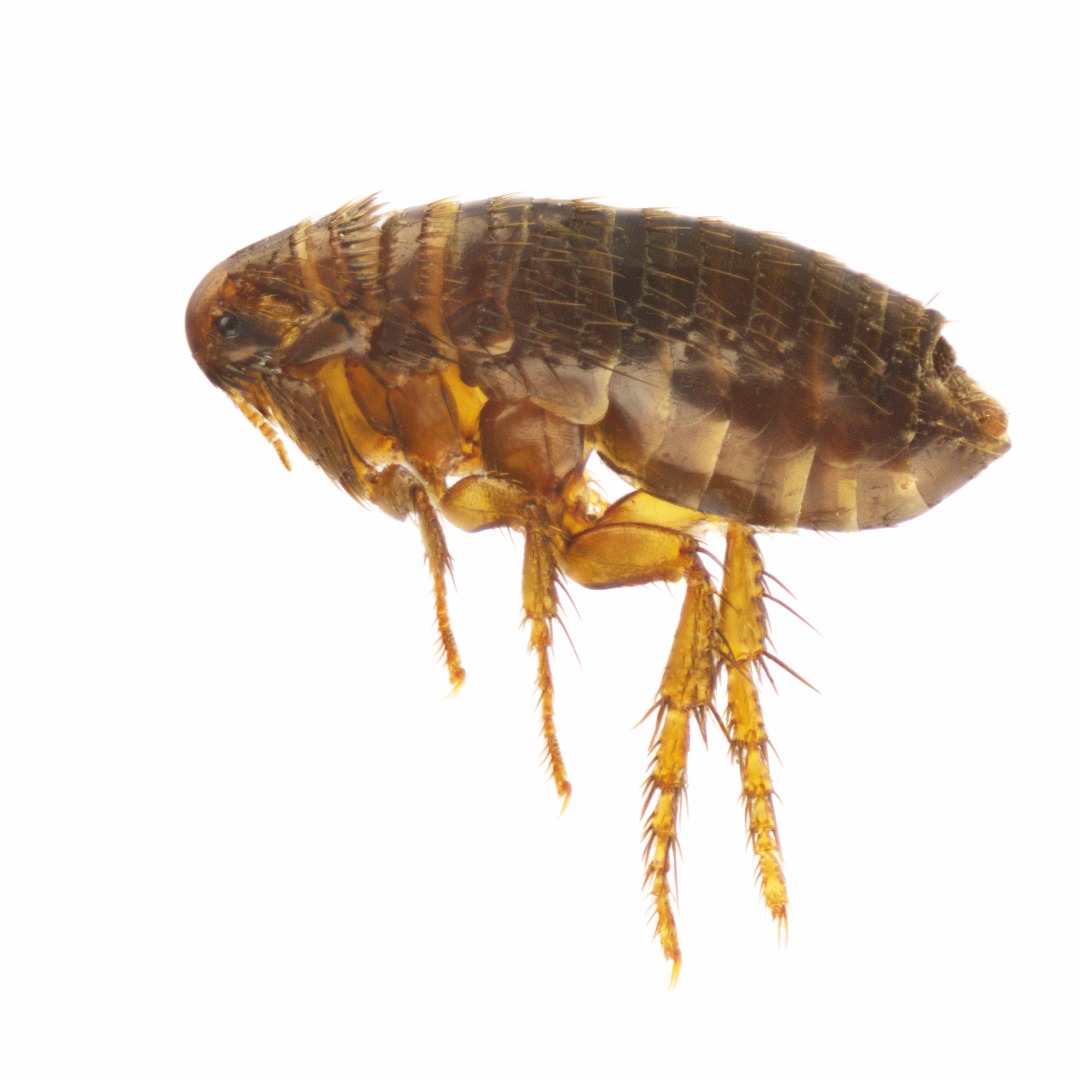Human flea, cat flea
(Pulex irritans; Ctenocephalides felis)
Fleas are common worldwide and there are over 1,000 different species of this pest. As an ectoparasite, the adult flea will feed on the blood of the host mammal and, once saturated, will use its muscular, long legs to leap to another host. The adult is found alongside its larvae – in bedding, carpets and the host animal itself. This pest has a high nuisance factor; once it attaches to a host it sucks the blood and injects saliva to prevent clotting – a process that can cause significant irritation to the host.
Life cycle:
Full metamorphosis
| Egg | The female adult will lay up to 1,000 pearly-white eggs on the host animal. Typically, these eggs will fall from the host and hatch within just a few days. |
| Nymph | The larvae develop in the humid conditions of the host or floor areas. Only 5mm long and white in appearance, the larvae go through 2-3 moults and are usually fully developed within 3 weeks. |
| Pupa | The pupae occurs in a cocoon. Due to exterior vibrations, the adult will emerge from its casing in approximately 2-4 weeks. |
| Adult | Only around 2mm in length; the flea’s most distinctive feature is its elongated, muscular legs, which are used to jump from host to host, and a strong mouth adept at extracting blood from the host. This pest has a concentrated row of bristles, which allows it to embed itself and travel through fur and hair. |
Habitat
The flea is found embedded within the skin, fur or hair of the host. Often, the human flea is found in bedding, which offers a sanctuary in the non-feeding daytime hours. The larva is often found in bedding or flooring, as it drops from the host.






